

Damion Smy
Suzuki Fronx recalled after seatbelt failure sparks ‘urgent investigation’
6 Hours Ago
We're spending six months with a Nissan Qashqai e-Power, putting it through its paces as a support car for our rough and tumble video team.
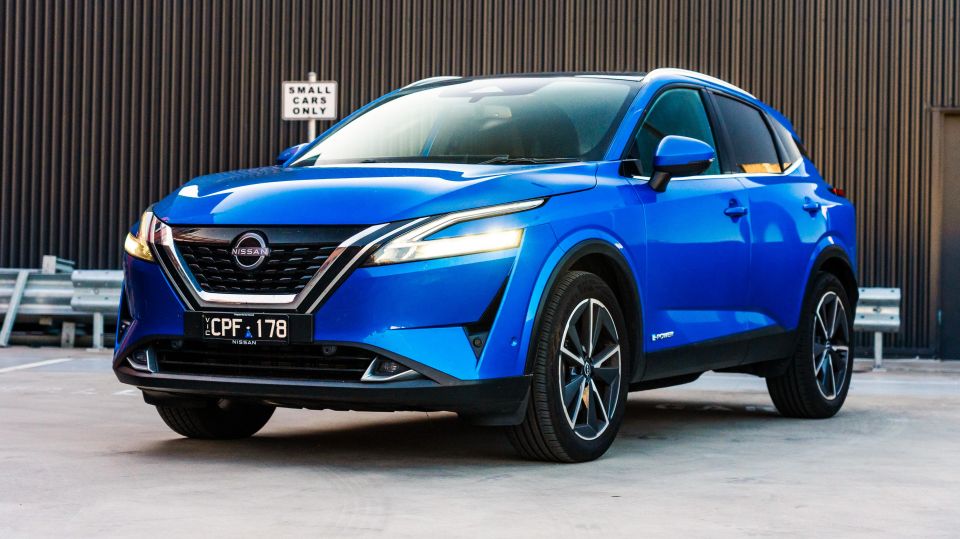
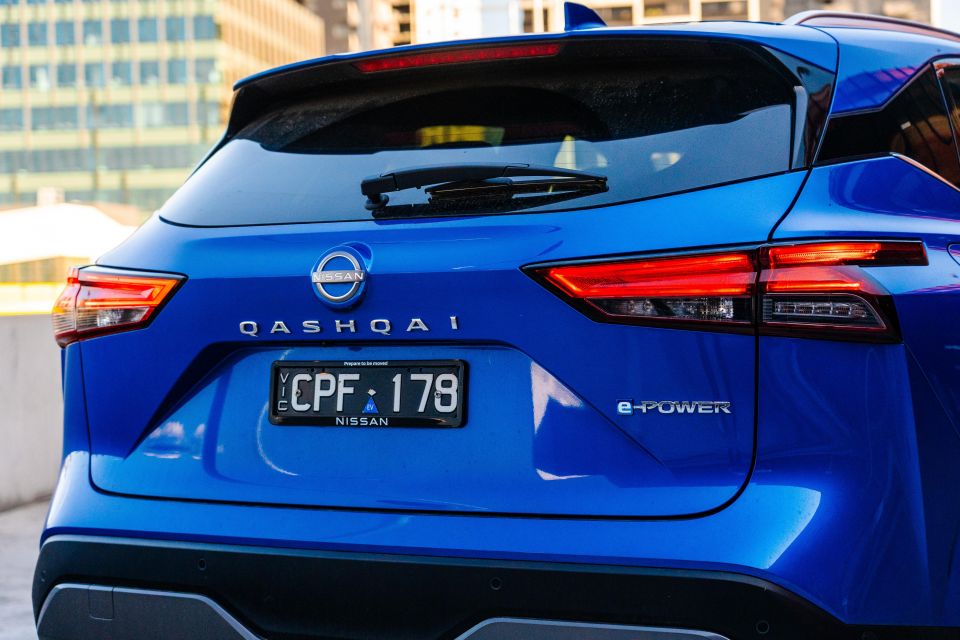

Quickly see how this car stacks up against its competition. Select any benchmark to see more details.
Where expert car reviews meet expert car buying – CarExpert gives you trusted advice, personalised service and real savings on your next new car.
Toyota has been the hybrid king for the better part of the current millennium. A current-generation Corolla or Camry will have you sipping well below 4.0L/100km, and even a RAV4 will dip below the 5.0L/100km mark.
WATCH: Paul’s video review of the Nissan Qashqai Ti
So for any vehicle manufacturer to stand a chance against the might of the world’s biggest car company, one would think the best option would be to develop a similar system.
Nissan, it seems, didn’t get that memo. The rival Japanese carmaker has taken a very different approach to hybrid technology with ‘e-Power’, the Nissan-trademarked petrol-electric drivetrain system that powers the Qashqai small SUV which I’ve been driving for the past few months.
Over the next few months we will take a look at what it’s like to live and work with the Nissan Qashqai Ti e-Power (which is actually an MY24 vehicle; note that there’s an updated MY25 Qashqai range coming soon), but for now here’s a rundown on what this clever little electrified SUV is all about.
The Qashqai e-Power is currently exclusive to the flagship Ti trim, priced from $52,090 before on-road costs. A facelifted Qashqai model range is on the way, and it’s expected to bring with it a more affordable ST-L e-Power variant, too.

| Model | Price before on-roads |
|---|---|
| Nissan Qashqai ST | $34,390 |
| Nissan Qashqai ST+ | $38,390 |
| Nissan Qashqai ST-L | $42,690 |
| Nissan Qashqai Ti | $47,890 |
| Nissan Qashqai Ti e-Power | $52,090 |
To see how the Nissan Qashqai lines up against the competition, check out our comparison tool
Buy your new car without the stress. It's fast, simple and completely free.

Great service from Travis and team, second time I have used this business would not hesitate to recommend them to anyone
Craig C.
Purchased a Ford Ranger in Sunshine Coast, QLD
CarExpert helped Craig save thousands on his Ford Ranger, now let us save you on your next new car.
Find a dealContrary to what a lot of people might think about interiors of cheaper Japanese cars, the top-shelf Qashqai Ti feels, dare I say, luxurious. Granted, it’s luxury on a relative budget, but it’s far more plush than something like even a bigger Toyota RAV4.

The seats are upholstered in quilted leather and up front you have heating and massage functions – okay, the massage function does feel like a kitten is walking on your back but it’s better than nothing. The seats are firm and supportive without being rock-solid.
The dash, doors and centre console have tons of soft-touch materials and the massive 12-inch infotainment screen is a pleasant upgrade from other Nissan products. It’s sharp, fast and has wireless Apple CarPlay, which is all I need in a car these days. It also has a 360-degree camera, but the quality is so low, especially in low-light situations, that it’s almost pointless.
Wireless Apple CarPlay does have a lag issue that grows as you drive too, and it gets worse when you pass under a toll gantry. The system will drop out for a second and when it comes back the lag gets progressively worse. If you press pause or skip the lag is most noticeable – it also makes it virtually impossible to hold a conversation during a call.
This is an issue that appears present in a number of vehicles with wireless smartphone mirroring, so it may not be the fault of Nissan. Still, it’s annoying.
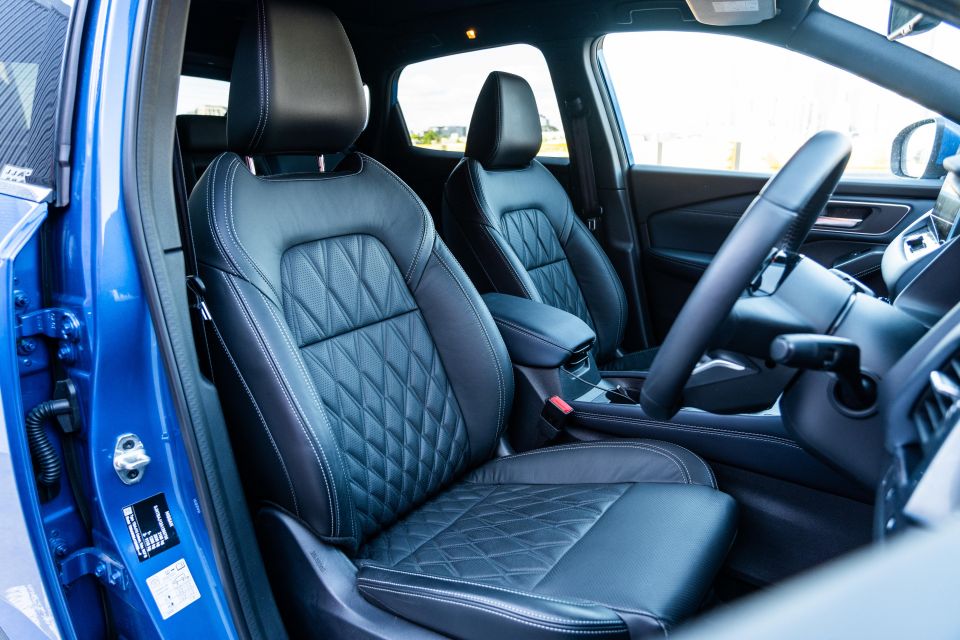
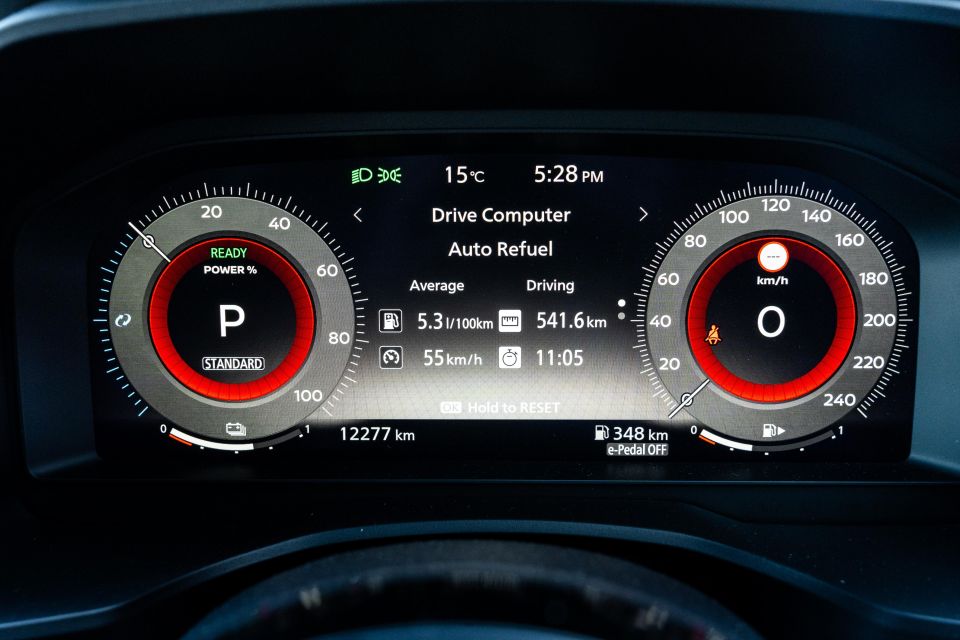
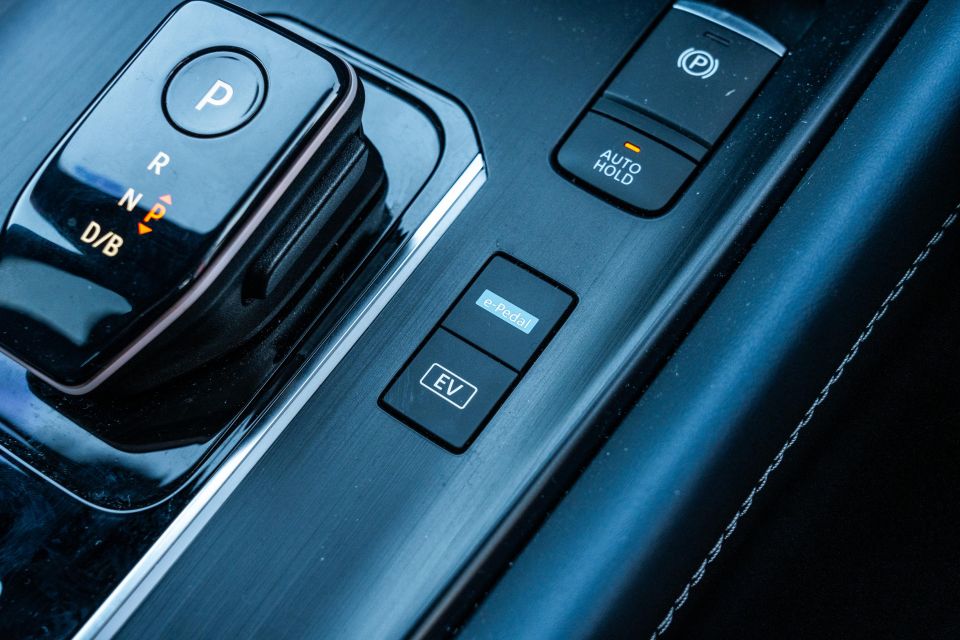
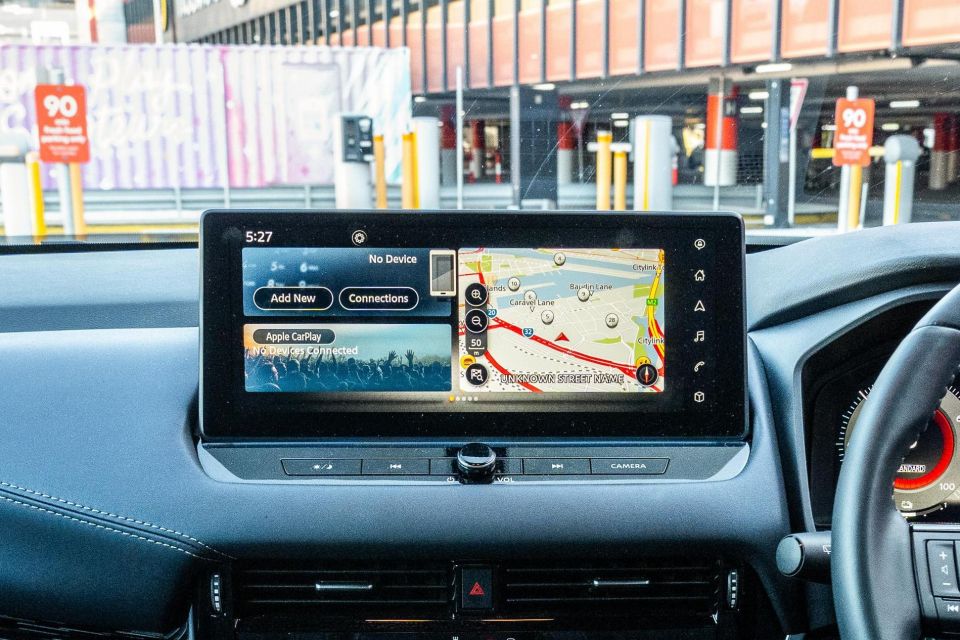
Another gripe is the lack of practical storage. There is a wireless phone charger in front of the centre console below the air-conditioning controls, and two cupholders in front of a rather small centre storage unit – that’s it.
You can’t turn the wireless charger off so it’s not ideal for placing keys or other small items on, and it charges so slowly that even after an hour of driving your phone will only increase charge by a small percentage, yet you can fry an egg on it.
This wouldn’t be so bad if it wasn’t for the giant piece of woodgrain-looking plastic that surrounds the small gear selector. It just feels like poorly utilised space for a vehicle that is only front-wheel drive and doesn’t require a tailshaft tunnel.
The second row is fairly spacious for a small SUV. There’s ample leg room for anyone up to 6’2” and the head room is generous even with a full glass roof. It has ISOFIX child seat anchors on the outboard seats, plus top-tether points, a USB-C outlet and air vents.

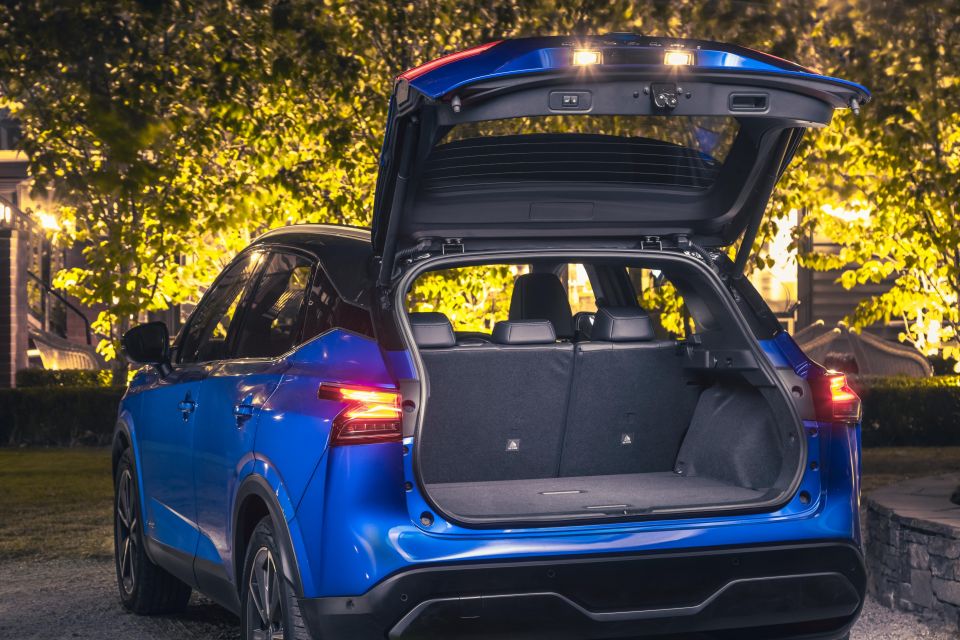
The boot is a standout (452-1376L), with covered compartments in the floor for storing valuables and a large, solid parcel shelf that can be removed if required. There’s also a 12-volt outlet and side pocket storage areas.
Folding the rear sets allows us to fit most of our film equipment and cases in when travelling to the Lang Lang proving ground, something that has been a struggle in larger vehicles in the past.
| Dimensions | Nissan Qashqai e-Power |
|---|---|
| Length | 4425mm |
| Width | 1835mm |
| Height | 1625mm |
| Wheelbase | 2665mm |
| Cargo capacity | 452 litres – rear seats upright 1376 litres – rear seats folded |
To see how the Nissan Qashqai lines up against the competition, check out our comparison tool
While the wider Qashqai range is powered by a 110kW/250Nm 1.3-litre four-cylinder turbo-petrol engine, the e-Power features a larger and more powerful 1.5-litre three-cylinder donk under the bonnet – but there’s a catch.
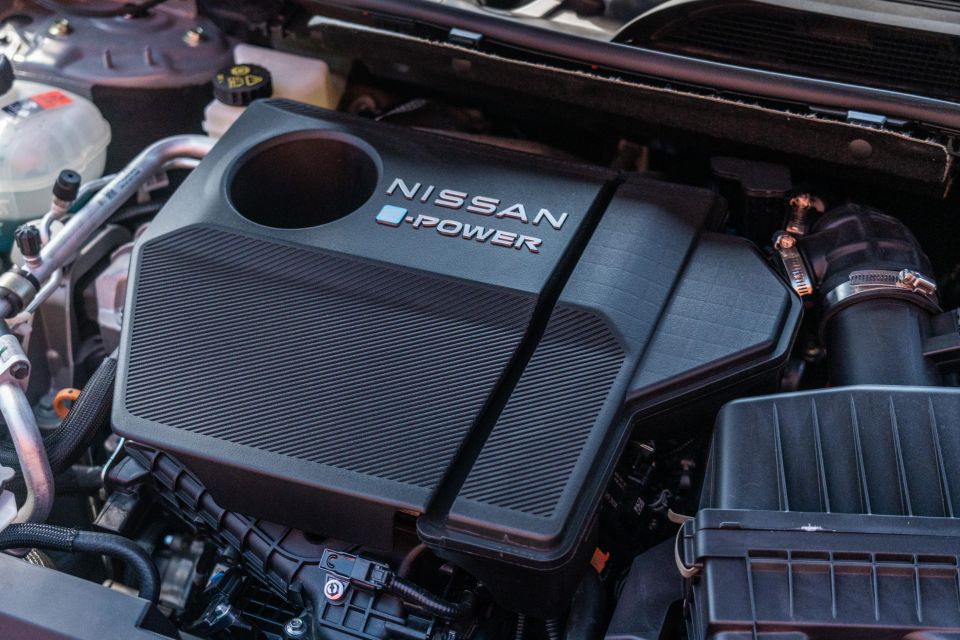
| Model | Nissan Qashqai e-Power |
|---|---|
| Engine | 1.5L 3cyl turbo-petrol |
| Power | 116kW |
| Torque | 250Nm |
| Electric motor | Single motor, front axle |
| Power | 140kW |
| Torque | 330Nm |
| Battery | 2.1kWh li-ion |
| Fuel consumption (claimed) | 5.2L/100km |
| Fuel consumption (as tested) | 5.4L/100km |
| Fuel tank capacity | 55 litres |
| Fuel rating | 95 RON |
Outputs for the e-Power’s petrol engine are quoted at 116kW and 250Nm, but unlike conventional hybrid systems that’s plumbed through a motor-generator and into an inverter.
That’s right, there’s no direct connection from the combustion engine to the wheels. In fact, the petrol motor exists purely as a power generator for the 2.1kWh battery that lives under the floor.
When you press the throttle, it sends a command to a single electric motor mounted on the front axle that drives the wheels. The e-motor’s outputs are quoted at 140kW and 330Nm.
If all that is a bit mind-boggling for you, here is the TL;DR version. The Nissan Qashqai e-Power is essentially an electric car with an inbuilt generator that makes it capable of travelling around 1000km on a full tank of fuel.
So while its plugless hybrid system makes it more like a Toyota series hybrid than a plug-in hybrid, it’s not a pure battery-electric vehicle (EV) and more correctly described as a range-extender EV.
However complex it is, and whatever you want to call it, this unique powertrain (which is equipped with all-wheel drive in the larger X-Trail e-Power), works seamlessly from the driver’s perspective.
To see how the Nissan Qashqai lines up against the competition, check out our comparison tool
Like an EV – it has that smooth, constant acceleration you find in lower-powered electric cars. Where it differs though, is when the petrol engine fires to life.
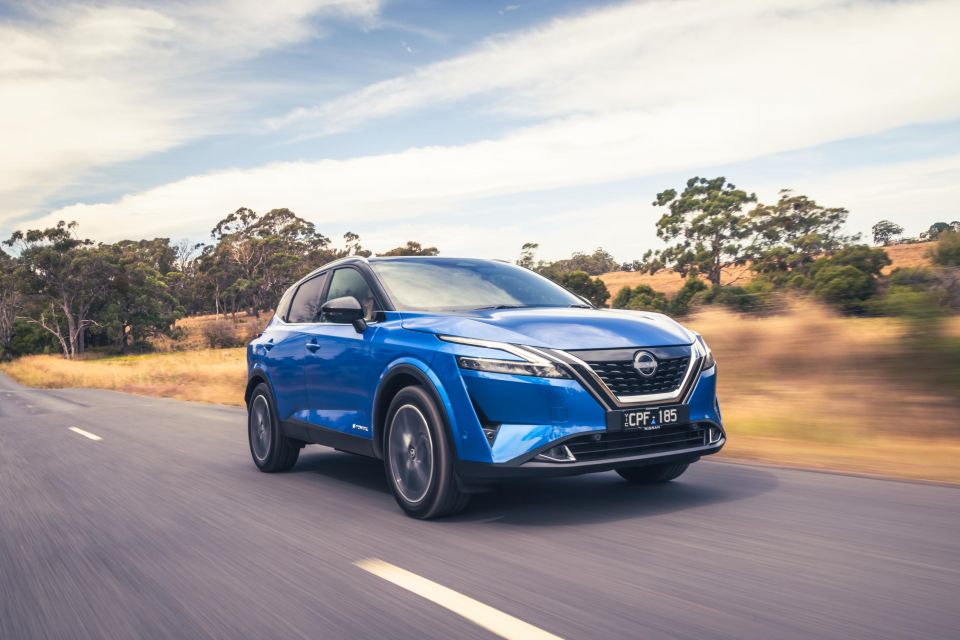
It’s a bit of a screamer – not 2003 F1 spec – but it does sound like it revs to 11. This is especially weird when your throttle inputs don’t align with the sounds the engine is making. Or when it fires into life at the traffic lights if the battery runs low.
You do get used to it after a while, but something you don’t get used to is how rough the engine start-up feels when the car isn’t moving. That could use some refinement, but it’s exacerbated by how quiet the powertrain is otherwise, and in the grand scheme of things it’s not a deal-breaker.
Fuel economy has surprised me. My average daily commute is around 100km return from the outer suburbs to the CarExpert office on the outskirts of Melbourne’s CBD.
I can either take the motorway (shoutout to my fellow travellers parking on the Monash every morning), or I can take the scenic Beach Road route. Either way, the Qashqai spends most of its time quietly putting along, when fuel consumption sits under 5L/100km.
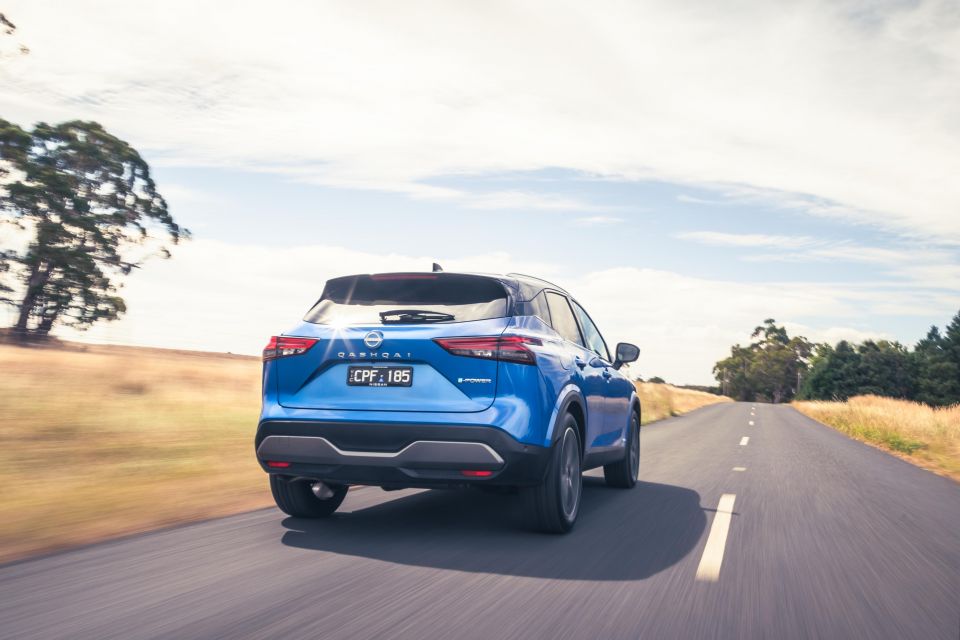
When driving to Lang Lang for filming days it isn’t as economical, because the majority of the 200km round trip is spent at 100km/h, which keeps the petrol engine running more often to ensure the tiny battery has juice to drive the wheels.
This bumps fuel usage up a bit, to around 6-7L/100km, but the overall average is still so low you can forgive it, and the 55-litre tank will still take you further than you expect. Currently, it’s sitting at 5.4L/100km since refuelling, having travelled 233km.
The adaptive cruise control is excellent, but the Nissan-branded ProPILOT system was turned off almost immediately. It’s an advanced lane-centring system and it does a great job, but where it falls apart is on straight stretches of road.
Even with both hands on the wheel, if you find yourself driving along a multi-lane highway with no need for any wheel input, the system will get annoyed at you for not holding the wheel. Thankfully there is a button to the right of the steering wheel to quickly toggle the system.
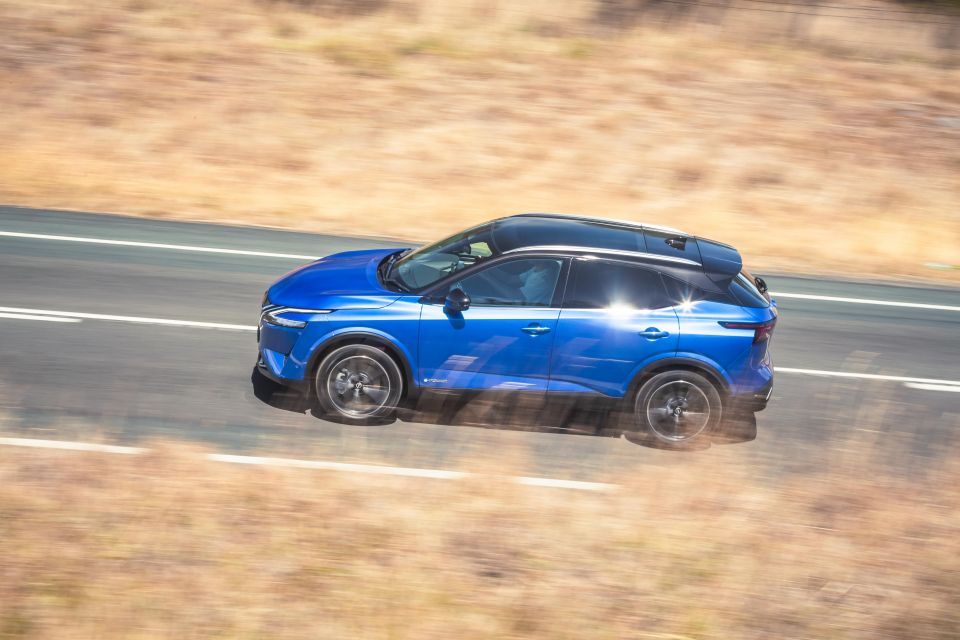
It hasn’t all been daisies and sunshine with the other assistance systems, either.
On a number of occasions, the front-facing camera sensor decided it wanted the day off, causing all manner of lights to appear on the dash. This in turn means cruise control doesn’t work, nor the lane systems. A power cycle of the vehicle will generally fix this, however, the cause escapes me.
Twice it happened on foggy mornings, which is understandable if the system is camera-based rather than radar. It has also happened once during light drizzle, so it’s just something to keep in mind.
Then there was the early winter morning when the front left tyre got a puncture. As we all know, Australia’s 355,000km of sealed roads have world-class potholes.
One early August morning on the way to filming hours before the sun came up, I introduced the Qashqai to one of these potholes, slicing the sidewall and causing the air to dissipate rather quickly.
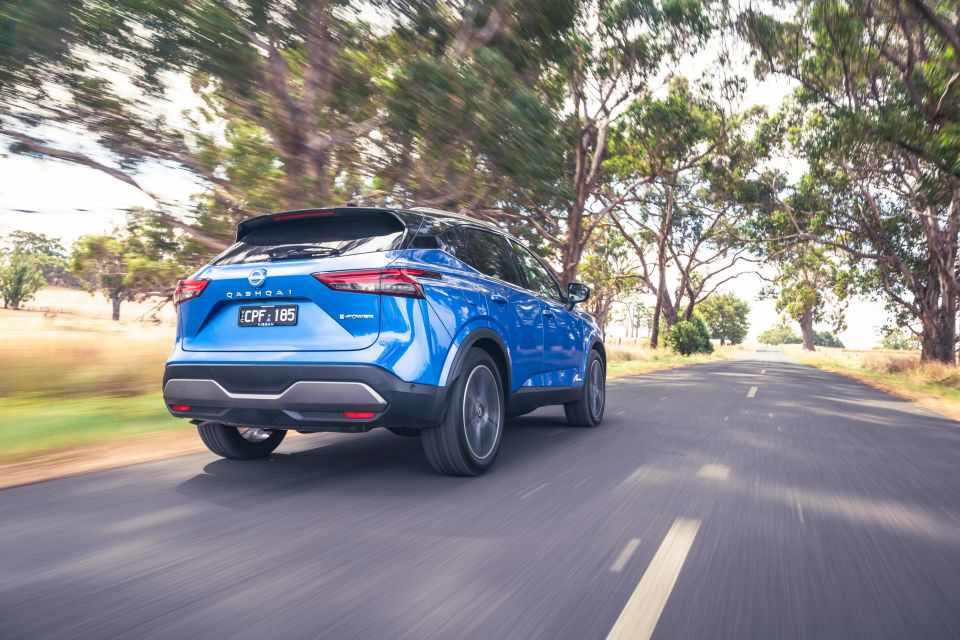
I was able to limp it to a nearby tyre shop, where I waited for Paul Maric to pick me up. That afternoon I returned to get the tyre replaced, at a cost of around $350.
There were a number of cheaper options, but given the car belongs to Nissan Australia and should be returned the same way it was loaned out, I was left with little choice.
To help with economy and road noise, the Qashqai e-Power is fitted with EV-specific tyres which unfortunately come with a bit of a tax.
Interested in buying a Nissan Qashqai? Get in touch with one of CarExpert’s trusted dealers here
The Ti e-Power sits at the very top of the Qashqai lineup in Australia.
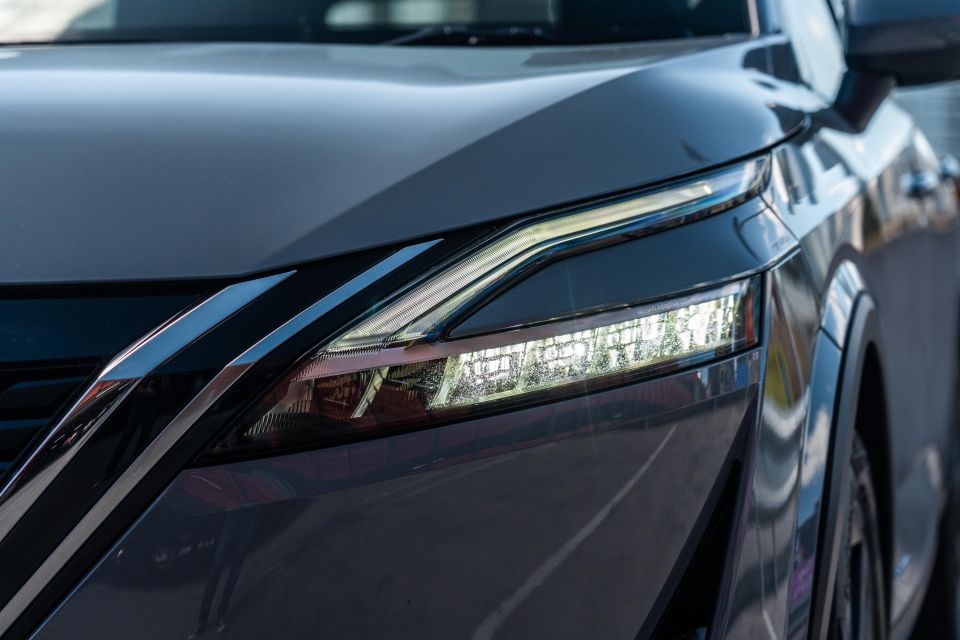
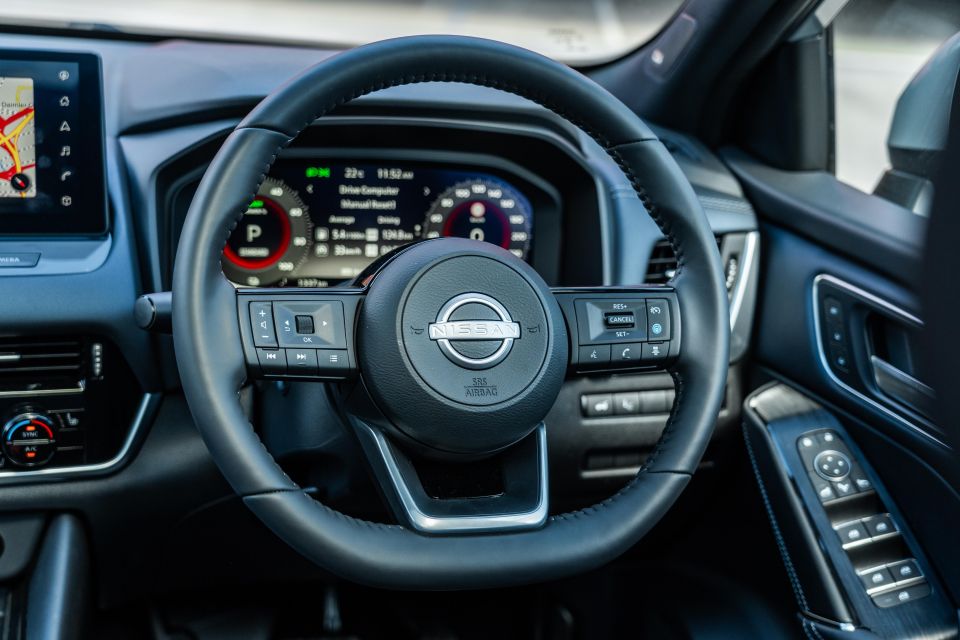


Qashqai ST:
Qashqai ST+ adds:
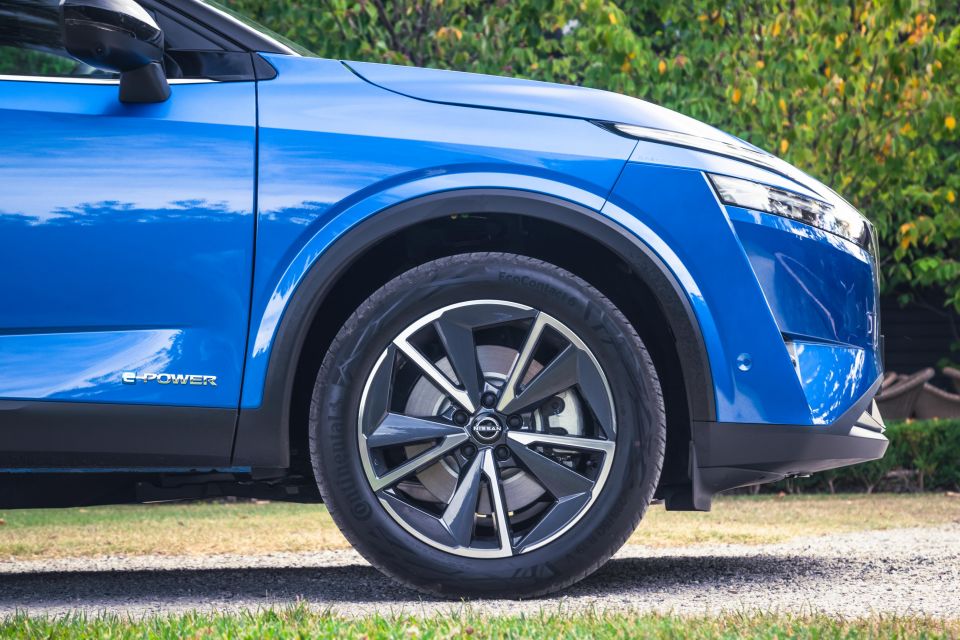
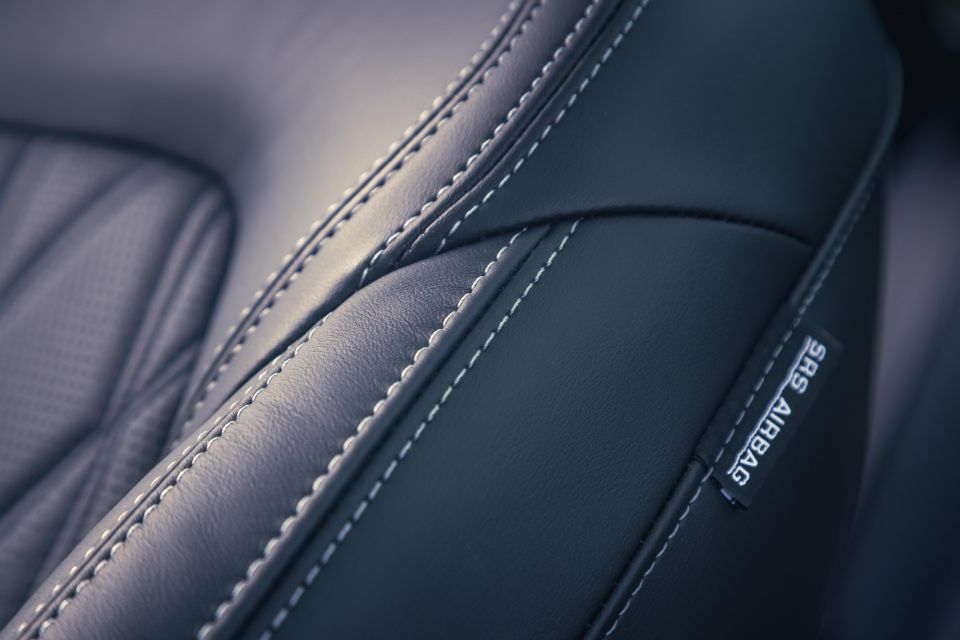
Qashqai ST-L adds:
Qashqai Ti adds:
Qashqai Ti e-Power adds:
To see how the Nissan Qashqai lines up against the competition, check out our comparison tool
The Nissan Qashqai has a five-star ANCAP rating, based on Euro NCAP testing in 2021.
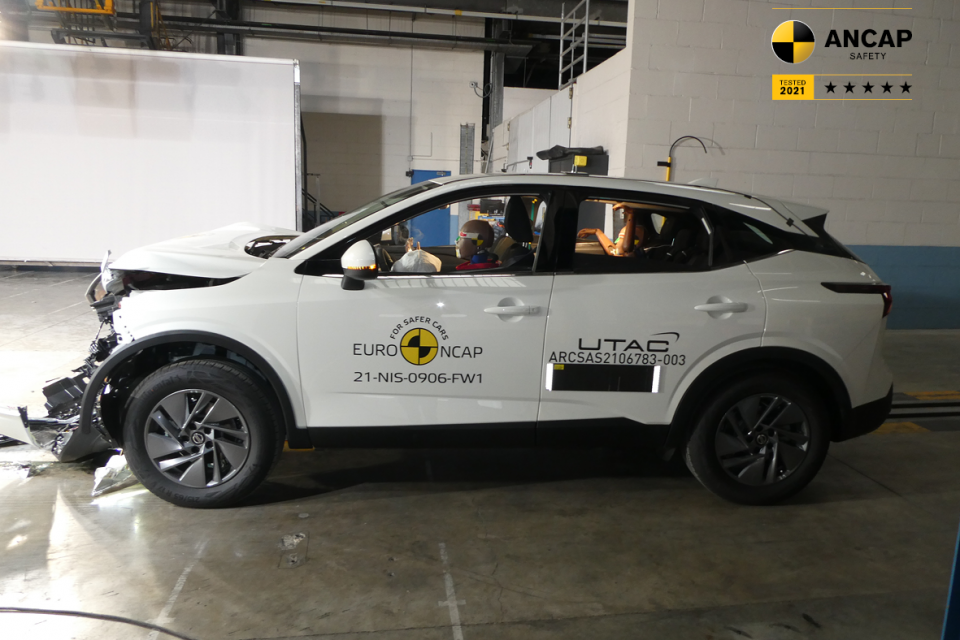
| Category | Nissan Qashqai |
|---|---|
| Adult occupant protection | 91 per cent |
| Child occupant protection | 93 per cent |
| Vulnerable road user protection | 74 per cent |
| Safety assist | 97 per cent |
Standard safety features include:
Qashqai ST+ adds:
Qashqai ST-L adds:
Qashqai Ti adds:
To see how the Nissan Qashqai lines up against the competition, check out our comparison tool
Like the wider Nissan lineup, the Qashqai is covered by a five-year, unlimited-kilometre warranty.

Where expert car reviews meet expert car buying – CarExpert gives you trusted advice, personalised service and real savings on your next new car.
| Running costs | Nissan Qashqai e-Power |
|---|---|
| Warranty | 5 years, unlimited kilometres |
| Roadside assistance | 5 years |
| Service intervals | 12 months or 10,000 kilometres |
| Capped-price servicing | Up to 5 years |
| Total capped-price service cost | $2007 |
To see how the Nissan Qashqai lines up against the competition, check out our comparison tool
Outside of some small quibbles, the Qashqai has been a dream. Everyone in the CarExpert team who drives it hands me back the keys with glowing praise – and surprise at how much they enjoyed driving it.

The only drawback really would be the price. At $52,090 before on-road costs, it isn’t the cheapest small SUV on sale, but out of all the small hybrids I have driven at CarExpert so far, it’s certainly the one I would pick.
In the next update, I will cover some of the video projects we have put the Qashqai through, as well as what it’s like to pack and take away on a longer trip.
Interested in buying a Nissan Qashqai? Get in touch with one of CarExpert’s trusted dealers here
Click the images for the full gallery
Where expert car reviews meet expert car buying – CarExpert gives you trusted advice, personalised service and real savings on your next new car.
Senior Lander is a video producer driving CarExpert’s YouTube growth with experience in automotive and media production.


Damion Smy
6 Hours Ago
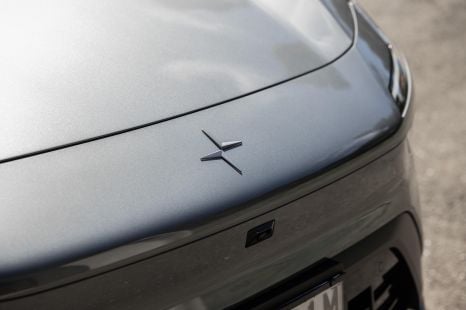

Damion Smy
7 Hours Ago


Damion Smy
8 Hours Ago
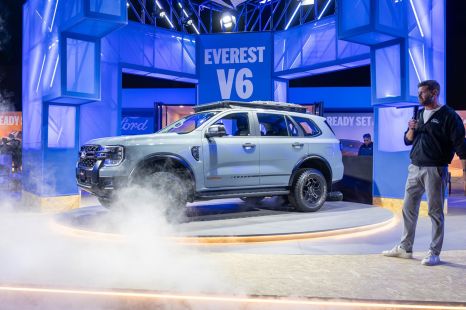

Damion Smy
11 Hours Ago


CarExpert.com.au
12 Hours Ago


Ben Zachariah
14 Hours Ago